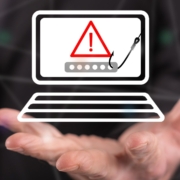Vulnerabilities are one of the four key paths to your crown jewels. Here’s what you need to know to avoid exploitation.
Let’s be real, vulnerabilities are a main reason we are all here, employed in the field of cybersecurity. Organizations invest in cybersecurity as threats and vulnerabilities continue to advance and become more sophisticated in an ever-changing threat landscape. In this blog, we will explore common characteristics of vulnerabilities to help aid your strategy against exploitation in the future.
Market Outlook
In the past year, vulnerability exploitation, as the entry point of threat actors, has doubled according to Verizon’s Data Breach Investigation Report. To find these vulnerabilities, threat actors are leveraging a wide variety of techniques, including scanning IPs and open ports, crawling for specific services, testing specific CVEs from the catalog discussed above, and running remote code execution.
With an ever changing threat landscape comes an ever evolving vulnerability market. As vulnerabilities are discovered and shared publicly, threat actors are forced to become more sophisticated in their approach to exploit weaknesses in a timely manner. Every year, the Top 25 Most Dangerous Software Weaknesses are analyzed by the CWE community. One trend seen in The 2022 Top 25 release surrounds out-of-bounds write and cross-site scripting (XSS), which continue to be two of the most dangerous weaknesses from year to year. The full list of the top 25 vulnerabilities can be found here.
So What?
As one of the four key information security threats of 2022, vulnerability exploitation must remain a priority in an organization’s security strategy. If a weakness is leveraged by a threat actor and they are able to gain unauthorized access to their network, an organization risks network compromise, data exfiltration, unplanned system downtime, ransomware, and more. Such cybersecurity risks can have debilitating effects across the organization, including financially, operationally, reputationally, and economically. As a result, it is crucial for organizations to do what they can to avoid vulnerability exploitation. By understanding how vulnerabilities are identified and categorized, as well as understanding standard conventions for information that can be used to measure and mitigate the risks to your organization, you can avoid exploitation all together.
Detect. Defend. Isolate.
Besides the efforts identified above to discover and disclose information security vulnerabilities, there are efforts to proactively protect against vulnerabilities on the market. Here at Conceal, we are doing our part to help you avoid vulnerability exploitation online. By pushing the boundaries and maximizing web-based security, web vulnerabilities become a non-issue.
By identifying risky web traffic before it compromises your network, Conceal minimizes the opportunity for a vulnerability to be exploited. Detecting vulnerabilities early in the kill chain allows remediation to be taken before any damage is done. Once detection of risky behavior is identified, Conceal allows the user to finish out the activity in an isolated environment unassociated with your network. This independent network will keep your organization’s data safe from threat actors who may be trying to use the web activity to exploit a vulnerability. Learn more about protection through isolation in one of our recent blog posts here.
Vulnerability exploitation will continue to be a key entry point into your organization’s network. As a result, security teams must explore proactive security measures and tools that can be leveraged to minimize threat actors’ ability to take advantage of a vulnerability. Conceal provides part of the necessary proactive security measures by stopping malware before it has a chance to exploit unpatched vulnerabilities. Request a demo today to learn how Conceal can be a part of your organization’s strategy to protect against vulnerabilities.
Vulnerabilities risk the confidentiality, integrity and/or availability of data within an organization. When coming up with a strategy to protect against vulnerabilities, it is imperative to understand the characteristics and values of common vulnerabilities.
Characteristics
Common values that are important to understand as it relates to a vulnerability include Common Vulnerability and Exposure (CVE) values, Common Weakness Enumeration (CWE) values, and Common Vulnerability Scoring System (CVSS) values. These characteristics provide organizations with a common set of nomenclature to leverage throughout the industry, providing ease when developing their strategy to protect against vulnerabilities.
CVE
CVEs refer to a database that catalogs publicly disclosed vulnerabilities specific to an explicit occurrence. Thousands of new CVE’s are published every year for the good of the security industry. The goal of CVE’s is to provide organizations with a repository of known vulnerabilities to ease information sharing. The database gives organizations a starting point when it comes to vulnerability management as well as creating and implementing a proactive security strategy. The catalog serves as a baseline to evaluate current coverage against the known vulnerabilities. Keeping up with the current vulnerability market is the first step towards proper cyber hygiene.
CWE
Beyond understanding the vulnerability, organizations can benefit from understanding the characteristics of the building blocks that lead to the vulnerability. While CVE refers to the instance of a vulnerability, CWE focuses on the cause of the vulnerability type. For the security community, CWE’s provide common nomenclature for discussing weaknesses and categorizing them by software, hardware or use case. The list of weakness types provide a baseline for identification, mitigation and prevention of a weakness.
CVSS
Once an organization understands relevant vulnerabilities and the underlying weaknesses, understanding the severity of the vulnerability is extremely valuable. CVSS provides a consistent score for vulnerabilities, regardless of the industry. By leveraging the CVSS, organizations can understand the severity of the vulnerability in their environment as well as let them prioritize the remediation of each vulnerability.
As vulnerabilities continue to grow in sophistication and rigor, these common attributes will allow organizations to openly talk about and understand the vulnerabilities relevant to their industry. These values will allow continued collaboration when developing an organization’s security strategy. Make sure to check out Conceal’s offerings that can be used to strengthen your organization’s strategy to protect against vulnerability exploitation by requesting a demo today.















